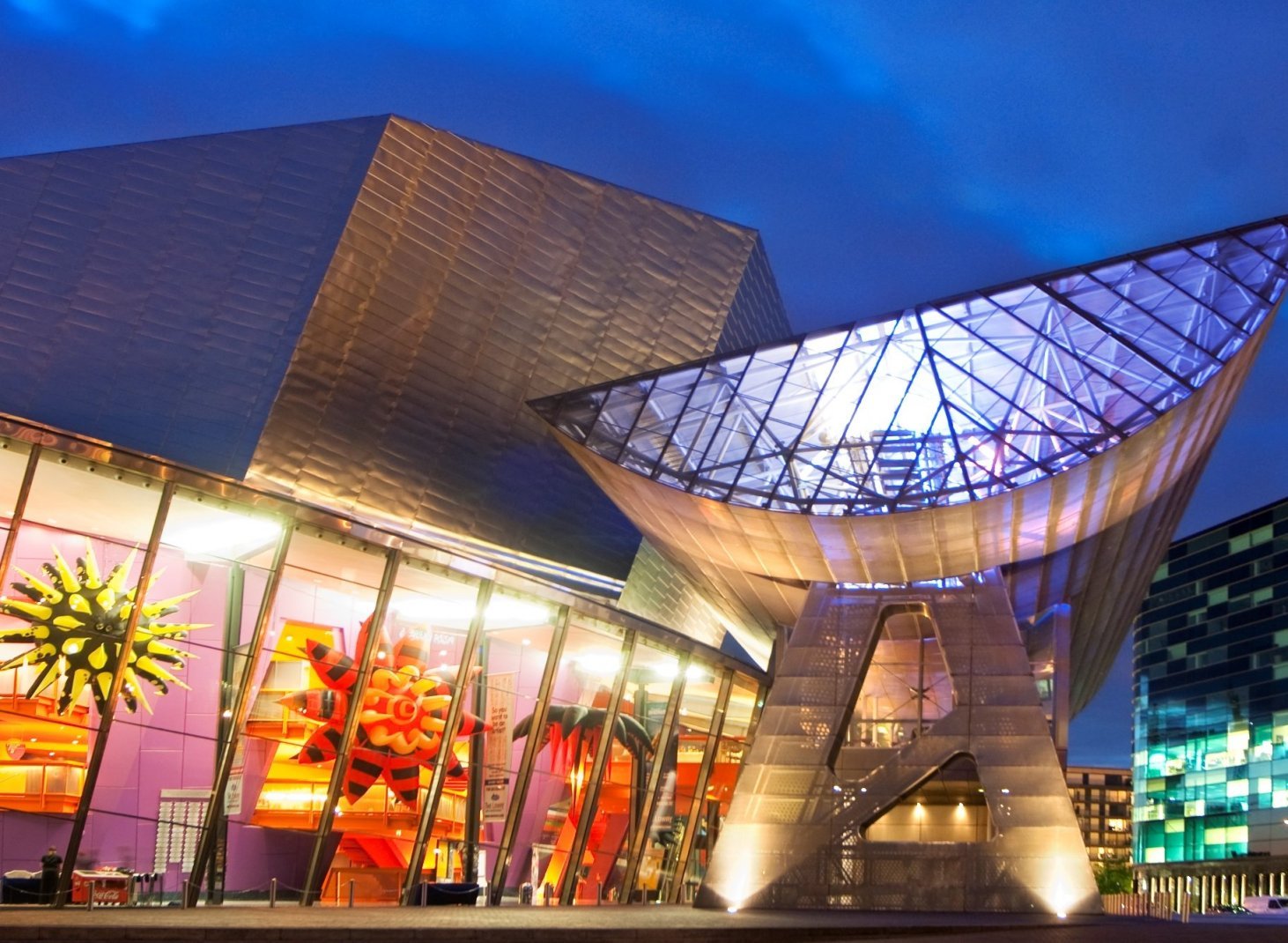
The Lowry, now appealing more to new visitors to Salford Quays
Photo: Ben Blackall
Achieving artistic ambitions
Financial independence and an ambitious artistic programme may seem incompatible, but Julia Fawcett has found a solution combining commercial savviness, efficiencies and sound planning.
As another financial year draws to a close, arts organisations across the country are no doubt being charged by their boards to become even more artistically ambitious while simultaneously more financially self-reliant. It is no secret that The Lowry faced huge financial challenges in its early years. When I joined the team in 2002 we set about developing a resilient financial model that operated with only 11.3% of funds coming from the public purse. Compare that with the industry average of 40% at that time and you realise just how hard a task it was. Skip forward to now, and with public funding stretched more than ever before, that model is now required to function on just 10% – and I am proud to say that it does.
There is no shame in an arts organisation being commercially savvy with its assets
The challenge facing us is how to extend our artistic ambition in an environment of shrinking public subsidy and ever increasing reliance on earned income. Central to our plan is our location at the heart of Salford Quays and MediaCityUK, one of the fastest growing visitor destinations in the country and also a major hub for the creative and digital industries. The Lowry was built long before these assets existed – and it has very much been the cornerstone of the £1.4bn regeneration of the area that surrounds us. In what is a very positive cycle, these assets could now allow us to develop our artistic and commercial activities to their full potential. But we had to be honest with ourselves as we were not ready to capitalise on this potential. To fully exploit these opportunities we would need to adapt and develop our building and our front-of-house spaces to physically connect with MediaCityUK and to make us more appealing to the many new visitors arriving in Salford Quays. We would need to upgrade our catering and conferencing spaces to allow us to meet the increasing demand from this busy destination. Finally, we have spent too much money lighting our building, but by refitting the internal lighting system we could significantly reduce our energy consumption and the amount of money we spend on electricity.
From this twin approach of annual cost reductions and increased income we created an Artistic Development Fund (ADF) to establish new, sustainable and ambitious creative plans. In 2013 we launched a fundraising appeal to secure the £5.5m funding for the capital work. I am really pleased to say that through a combination of support from individual donors, trusts, foundations and Arts Council England, all of the funding is now in place to allow the project to be delivered in 2015.
The efficiencies that flow from this work will support a new, annual festival of building-wide, cross-artform work. It will take place in spring each year and will become a strong pillar and anchor to our year-round programme. The first festival will take place in March 2017 and will explore the role and relevance of place, community and identity through a programme spanning our theatres, galleries and public spaces and reaching out further through a major cross-generation engagement project.
The ADF is a funding stream that we are both proud and excited to see come to fruition – and is proof that there is no shame in an arts organisation being commercially savvy with its assets when used to promote and deliver on artistic ambition.
Julia Fawcett is Chief Executive of The Lowry.
www.thelowry.com
Join the Discussion
You must be logged in to post a comment.